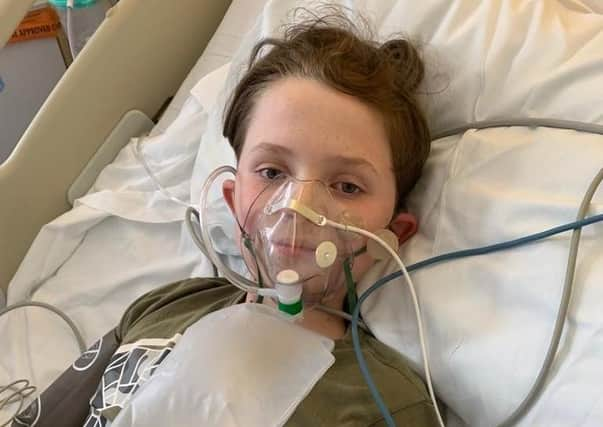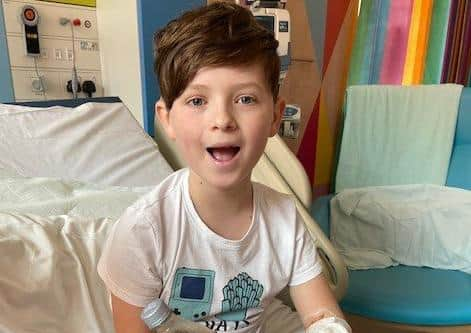Eleven year old Dylan’s life-threatening infection turned out to be diabetes


When Dylan Holliday, 11, developed an infection in his finger, within hours, he was fighting for his life.
“He had a nasty infection, so the GP prescribed him with some antibiotics,” says mum Kay.
Advertisement
Hide AdAdvertisement
Hide Ad“He kept saying ‘I just don’t feel well mummy’ but I just assumed it was due to the antibiotics the GP had given him. He then started to be sick, so we booked an out-of-hours appointment. When we got there, he was struggling to stand up and was completely out of it. He looked really unwell and after examining him they just said, ‘we need to call 999 now.”


Dylan was transferred to Sheffield Children’s Hospital, where he was immediately taken through to the resuscitation area in the Emergency Department.
“The team there were just phenomenal. It wasn’t long before they said they were confident Dylan had type-1 diabetes and that diabetic ketoacidosis was making him seriously unwell.”
Dylan’s ketone levels were dangerously high, and his heart rate shot up.
Advertisement
Hide AdAdvertisement
Hide Ad“He was screaming in pain and having episodes where he was delusional and seeing things.”


Dylan then lost consciousness and was transferred to the Intensive Care Unit, where he spent several hours before his condition was stable enough to move on to the High Dependency Unit.
After five days, Dylan was well enough to return home. He is eagerly awaiting starting secondary school for the first time in September, but life will never quite be the same again. For children with type 1 diabetes, everyday eating and drinking require constant counting for carbohydrates, with insulin doses tailored for every child. Insulin levels are also adjusted if blood sugar levels are running too high or low.
“Our lives have now changed forever, we’re constantly learning about diabetes and the impact it will have on our lives, but the Diabetes Team have been amazing.
Advertisement
Hide AdAdvertisement
Hide Ad“Every one of them made the effort to introduce themselves and check in with us during our stay in hospital and they have been a constant source of support. The dieticians also call every couple of days offering advice and helping us with any questions we have.
“My message to any parent out there would be to look out for the signs. It may be rare, but it can happen to anyone, at any time, for any reason.”
Type 1 diabetes is an autoimmune condition, where the immune system mistakes the cells in the pancreas as harmful and attacks them.
Diabetic ketoacidosis occurs when the body starts to run out of insulin, causing harmful substances called ketones to build up. It can be life-threatening if not treated quickly
To support the creation of a new Emergency Department visit www.tchc.org.uk
Comment Guidelines
National World encourages reader discussion on our stories. User feedback, insights and back-and-forth exchanges add a rich layer of context to reporting. Please review our Community Guidelines before commenting.